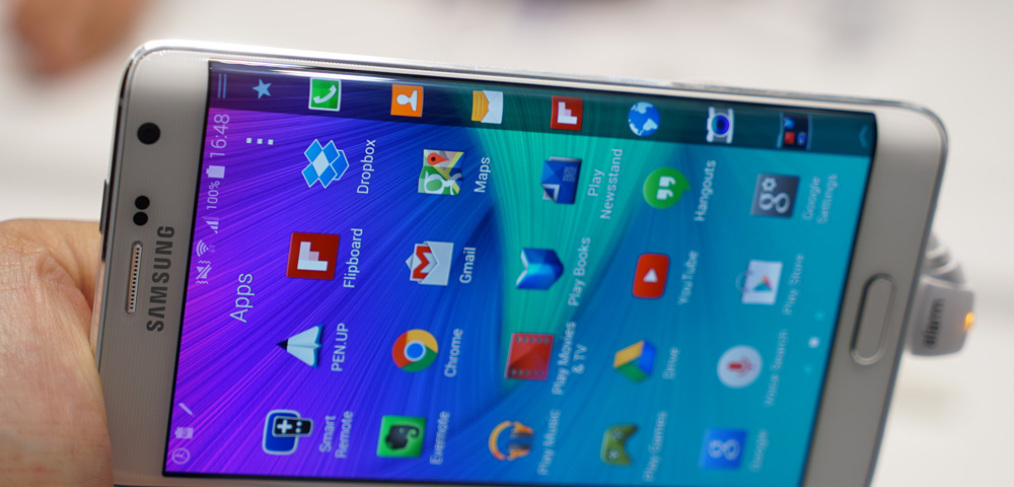
State of the world’s best smartphone makers
In 2015 it won’t be enough to just make the world’s best smartphone.
If the list of the world’s largest smartphone manufacturers is any indication, innovation, product integration, content ecosystems and marketing strategies are as much a factor for success.
As of October 2014 the world’s top 3 brands in order are Samsung, Apple, and Xiaomi.
The latest world ranking, from analytics firm International Data Corporation (IDC) comes as no surprise actually. All three companies make great smartphones that look good, work well, and that people love to use.
But what’s interesting is their differing market strategies.
Samsung for example floods the market with smartphones, it has at least 20 on its current lineup catering to every price point and form factor, each blasted into our consciousness with its sky’s the limit marketing budget.
In stark contrast Apple sells only premium smartphones. The legendary iPhone comes in 3 variants with steep pricing justified by its god-like halo. Tech companies aspire to be like Apple and consumers want to use their products. But Apple isn’t just selling a smartphone but an experience and a marketplace of content.
Up and comer Xiaomi is on a steady rise climbing from 5th to 3rd in the last quarter despite its absence from European and North American markets. Instead, the Chinese company, often compared to Apple, focuses on building hard-core communities by selling dirt cheap high-end smartphones to users in strategic developing markets in Asia including China, Southeast Asia and India.
Rounding up the Top 5 are Lenovo and LG. ZTE and Huawei are probably in 6th and 7th while other popular brands like Sony, HTC, and Nokia are no where to be found.
With more users turning to smartphones as their primary means of computing and communication – the smartphone space continues to grow at a frantic pace and is more competitive than ever.
While smartphones continue to get smarter and better, 2014 was all about iteration. There was hardly anything groundbreaking, merely refinements to already capable devices. In 2015 tech companies will need to innovate more, those that complacently stick to tried and tested strategies will fail.
Look at Samsung, no longer the dominant force that it used to be. In fact, its October earnings report revealed that profits had dropped to its lowest point in 3 years. China Brand Research Center also reports that Apple has now overtaken Samsung as the top mobile brand in the lucrative Chinese market.
2015 will be a make it or break it year for Samsung. If they don’t play their cards right they could end up the way of Nokia. Not more than 5 years ago the Finnish cellphone giant was the undisputed top brand for almost a decade. Samsung says 2015 will be about cleaning up its confused and crowded product lineup. But it will also need to rethink the values that dictate the development of their products.
Now on a comeback, 2015 will also be a pivotal year for Nokia, now Microsoft Mobile. Earlier in 2014 Microsoft took over the Nokia’s fledgling smartphone business infusing it with a fresh perspective, more capital and the company’s new mobile first, cloud first strategy.
The prospect of Microsoft’s lineup of Windows Powered Lumia smartphones is good. In Berlin last September the company launched two new phones, but one specifically, the Lumia 830 represents a new class of devices Microsoft is calling affordable flagship – a phone with high-end specs but priced more competitively. The appeal of devices like the Lumia 830 will be a trend in 2015. Microsoft is also doing away with the feature phone, once a separate class of devices below smartphone price points. But all of that is changing. Microsoft has its sights set on lowering price points of Windows Phone. During a recent visit to Manila, Device Sales Chief Chris Weber said in 2015 his company is prepping to launch a wider product portfolio that includes a sub $50 Lumia smartphone.
The success of Windows Phone is important to consumers. Not nearly a strong third yet, a thriving Windows Phone operating system will push the development of iOS and Android further and will give users more compelling reasons to switch over to the superior hardware Nokia is known for.
The prospects also look good for Lenovo. Like Xiaomi this Chinese company has a strong foothold in developing markets and in its home base of China. But even more promising is its recent acquisition of Motorola. The Moto X is perhaps one of the more innovative smartphones of the last two years. That combined with its popular circular smartwatch the Moto 360 make it a company to look out for. Hopefully it can bring the hip vibe of Motorola to the rest of its lineup.
Xiaomi is also just getting started. A few months ago it launched in India. And in a bold statement of the company’s commitment to the Indian market, its Global VP and former Android boss Hugo Barra made India a home base. Xiaomi’s prices are disruptive offering the cheapest smartphones vis a vis smartphone specs in the world. While its focus on China and India make business sense, it would be a shame if the world didn’t get in on the action.
But if anyone is in the best shape it’s Apple. It’s products are all tightly integrated. Mac and iPhones users can seamlessly move between environments, start a document or a conversation on their computers and then continue on their iPhones. It’s also built a thriving platform for content, the iTunes store sells hundreds of millions of songs, movies, TV shows, and apps. Its just launched payment system Apple Pay will extend that purchasing power to the real world. Next year the Apple Watch goes on sale, cars with iOS start rolling out of showrooms. Not soon thereafter we’ll see integration with the first crop of home appliances.
There’s a lot of pressure for LG to remain relevant and on top of its game. Over the last few years we’ve seen pretty decent technology come out of the other-Korean tech giant. But LG remains to live in the shadow of fierce rival Samsung. The same has become of Huawei, the third largest in the world in 2013 has now been pushed off the Top 5. This year saw a stronger marketing push from Huawei but it’s now relegated to the status of “the other Chinese company” behind Xiaomi and Lenovo.
Like the computer was once before, in the years to come the smartphone will serve as the hub for technological devices in your car, your home and those you wear on your person. Building the best smartphone means laying the predicate for that future.
While the iterative state of 2014 was stale and hardly progressive, the future remains bright and exciting. Whether it’s flexible screens, virtual reality, all-day batteries or indestructible chassis let’s hope that 2015 will be more revolutionary than evolutionary.
This piece was first published in The Philippine Star on November 10, 2014 as part of my regular Gadget Week column. The special Technology Section is printed every Monday.
